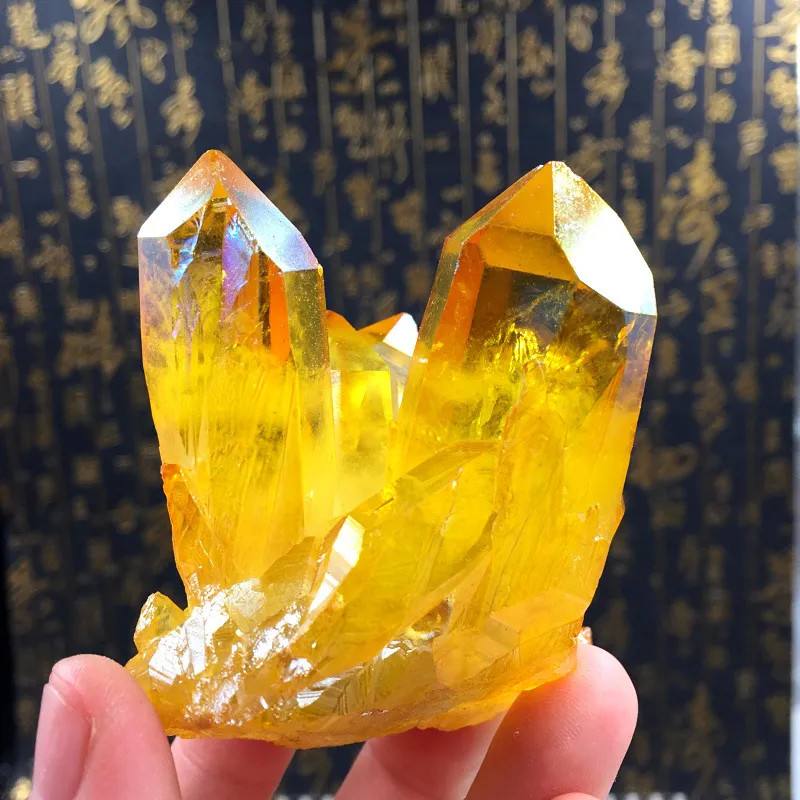Danburite is named after the city of Denbury, USA, which is a rare gem mineral. Because of the no cleavage and beautiful flash phenomenon, it is trendy.
Basic Properties of Danburite
- Chemical composition: calcium borosilicate, CaB2 [SiO4] 2.
- Crystal system: Danburite belongs to the orthorhombic crystal system, is short columnar, and can be blocked, granular or crystal-group aggregates.
- Crystallization habit: The rhombic column and the rhombic cone are in the shape of a long column, and the cross-section of the crystal is rhombic.
- Because of the deviation on the cone, it shows an apparent shape. The cylindrical surface of the crystal has prominent longitudinal lines, and the bottom surface is sometimes uneven, like a stepped fracture.
- Cleavage: not developed.
- Fracture: half-shell.
- Mohs hardness: 7.
- Relative density: 3.00.
- Refractive index: 1.63~1.64.
- Birefringence: 0.006.
- Optical property: biaxial crystal, optical property depends on the wavelength of the light used for lighting, which is negative when red to green light, and positive when blue light.
- Gloss: glass luster.
- Transparency: Transparent.
- Dispersion: 0.017 (low).
- Cleavage: {001} Cleavage is incomplete.
- Pleochroism: Colored crystals are weak.
- Color: yellow and colorless, occasionally pink. The honey yellow and wine yellow are like Topaz.
- Absorption spectrum: spectral lines of rare earth elements can be seen in some samples.
- Luminescence: It can emit blue fluorescence under long-wave ultraviolet light and short-wave ultraviolet light.
- Transparency: Transparent to translucent.
- Origin and occurrence: Danburite is produced in metamorphic limestone, granite, pegmatite or hydrothermal vein. After weathering, the rock will be transferred into placer ore.

Physical Properties of Danburite
Glass luster to grease luster, transparent to translucent, color changes from colorless to light yellow and brown, occasionally pink.
Biaxial crystal is positive or negative, 2V=90 ° or so, refractive index is Np=1.630, Nm=1.633, Ng=1.636 (± 0.003), birefringence is 0.006, and dispersion is 0.016.
When Danburite is dark-yellow and light-yellow, its pleochroism is very weak.
Generally, it emits strong blue-to-blue-green fluorescence to long wave light but has a weak response to short wave light, and the fluorescence color is the same as that under long wave light.
Due to the existence of rare earth elements, a double absorption line can be displayed at 580nm.
With parallel {001} extremely incomplete cleavage. The fracture surface is uneven to not obvious shell shape, with Mohs hardness of 7 and density of 3.00 ± 0.03g/cm.
Identification characteristics of Danburite
Amplified observation shows that there are gas-liquid two-phase inclusions and solid-phase inclusions.
The appearance of Danburite is similar to that of topaz crystal, but the bottom cleavage is not as obvious as that of Topaz.
We can distinguish the finished products by measuring the refractive index, birefringence and relative density.
The density of Danburite is 3.00g/cm, the density of Topaz is 3.52g/cm, and the density of citrine is 2.65g/cm. Therefore, it is easy to distinguish it from Topaz and citrine. We can also determine Danburite and apatite according to different optical properties.
Occurrence and origin of Danburite
Danburite is produced from metamorphic limestone and low-temperature hydrothermal solution, and the alluvial placer is also an essential source of Danburite.
- Gem-grade yellow Danburite is produced in Madagascar;
- Yellow and colorless Danburites are produced in the Mogu area, Myanmar;
- Mexico has colorless and pink Danburites;
- Japan has colorless Danburite.
Danburite healing Property
Perhaps it is because the vibration frequency of Danburite is very harmonious, so in the eyes of crystal fans, it is a gem with high spirituality, which can affect the heart’s energy and stimulate wisdom and higher levels of consciousness.
Its brilliance comes from the universe so that people can reach the highest realm of heaven and clear away the obstacles on the road ahead.
Some even said that the crystal emits spiritual light like Buddha. All kinds of explanations have added to the mystery of Danburite.
People believe wearing Danburite can connect you with quiet and eternal wisdom, while using it in solitude can lead people to a high level of consciousness and get the guidance of inner wisdom.
On the other hand, Danburite is believed to be the best gem to help others get rid of past memories, which can relax people, reverse confrontation and bring peace of mind.
Crystal fans believe that Danburite is a therapeutic gem, which can eliminate allergies and chronic diseases, and has a strong detoxification function.
Therefore, it has a certain effect on the liver and gallbladder-related diseases. In addition, it can also strengthen muscles and motor nerves and gain weight.
How to use
Put the Danburite in the right place (especially in the heart), and put it under the pillow to get good sleep.
Other colors
In addition to the common property, the following colors of Danburite have other healing properties:
Pink Danburite: promote self-love and make people happy.
Conclusion:
The chemical formula of Danburite is CaB2 [SiO4] 2, which belongs to the orthorhombic system, and the crystal is short-columnar and granular.
The name Danburite comes from Danbury, Connecticut, where it was found.
The British Museum of Natural History in London, England, has a wine-yellow stepped faceted Danburite from Myanmar, weighing 138.61 ct;
A yellow Danburite from Myanmar, weighing 18.4ct, and A colorless Danburite produced in Japan, weighing 7.9ct, are collected by Smith Museum in Washington, USA.
